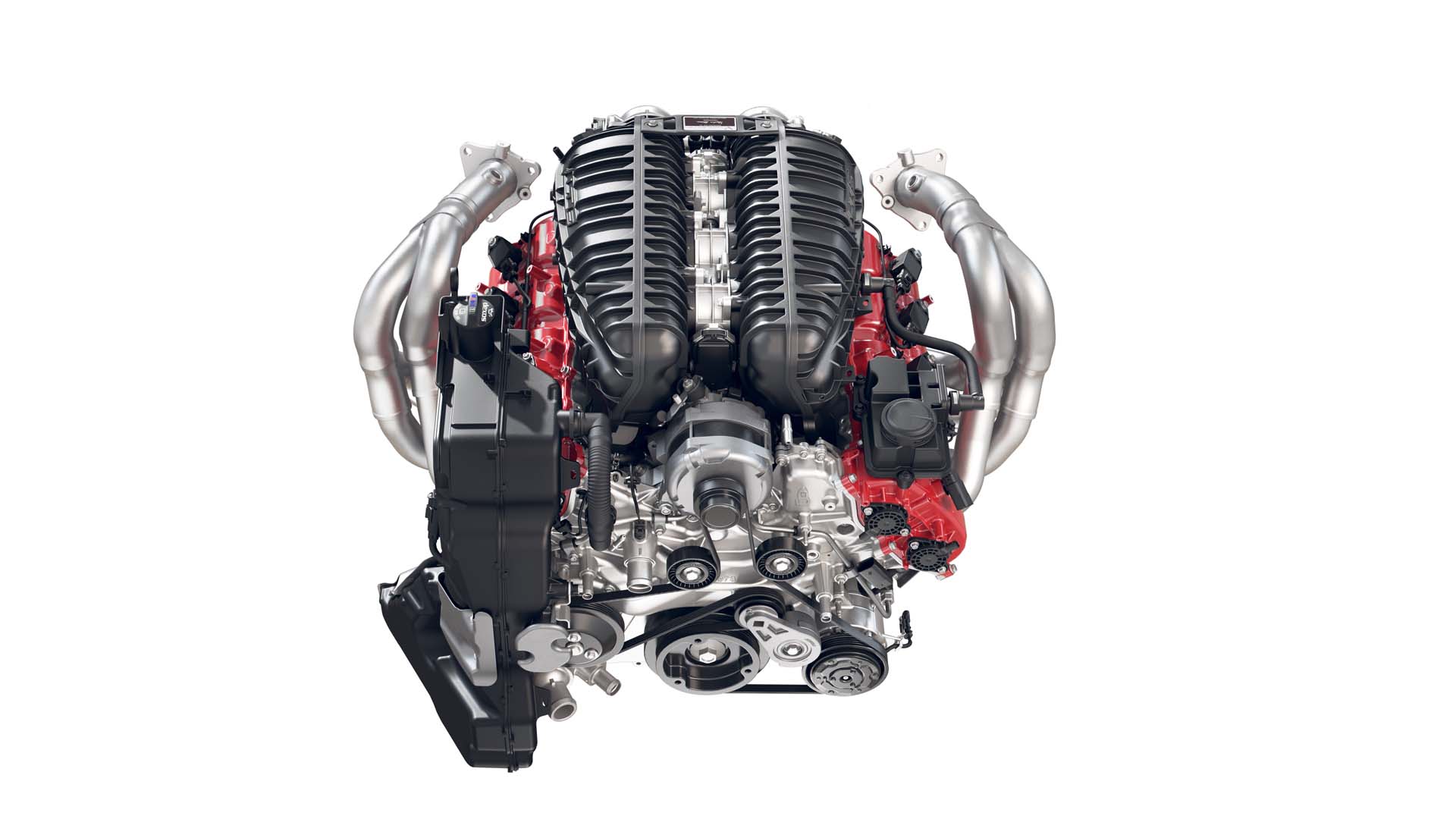The 2023 Chevrolet Corvette Z06 debuted earlier this week with some impressive features, including the most powerful naturally aspirated production V-8 ever. Engineering Explained host Jason Fenske provides a deep dive into this 5.5-liter V-8, and compares it to the old Z06’s supercharged engine.
Code-named LT6, the C8 Z06 engine produces 670 hp at 8,400 rpm and 460 lb-ft of torque at at 6,300 rpm. It also boasts double overhead cams, dry-sump lubrication, and a flat-plane crankshaft. It can also rev to 8,600 rpm, giving off a wail that’s more Italian supercar than American muscle while doing so.
The horsepower figure is remarkable because it beats the 6.2-liter supercharged LT4 V-8 used in the previous-generation C7 Z06. That engine was larger and boasted forced induction, but maxed out at 650 hp (at 6,400 rpm).

2023 Chevrolet Corvette Z06
A top-speed figure hasn’t been verified, but Chevy spokesman Trevor Thompkins told Motor Authority that the 0-60 mph time will be 2.6 seconds.
Granted, the LT4 had more torque—650 lb-ft at 3,600 rpm—but Fenske noted in the video comment section that the difference can be made up via gearing. The 2023 Z06 has a 5.56:1 final-drive ratio, compared to 2.41:1 for the previous Z06.
Regardless, the LT6 V-8 is an impressive engineering achievement. Horsepower is largely restricted by how much air can be crammed into an engine, and this one can only take in air at atmospheric pressure, Fenske noted.

2023 Chevrolet Corvette Z06
Fenske also points out some interesting details, like the hollow camshafts (to reduce inertia) and dual valve springs (for more precise valve control). The cam lobes also act directly on the finger followers with no hydraulics, providing more direct valve motion. Lack of hydraulics would normally require periodic adjustment of the valve lash (the space between the rocker arm and the top of the valve stem), but Chevy eliminated the need for that with a precisely-engineered shim that’s installed at the factory, Fenske said.
Chevy also put the direct fuel injectors on the exhaust side rather than the intake side, which allows for larger intake valves and helps with emissions, Fenske said. The intake manifold was designed to account for Hemholtz Resonance. The term describes waves of air pressure that can cause annoying sounds when a car window is rolled down or, in this case, maximize torque output.
The full video has even more details and helpful explanations of the engineering terms, so it’s definitely worth a watch.

I really enjoyed reading this article and discovered some useful information. Thanks for sharing your insights with your readers.